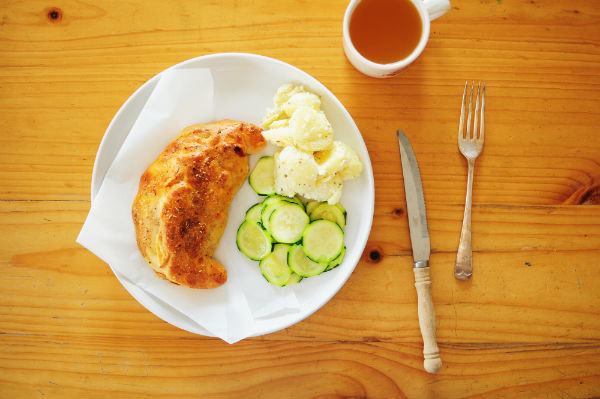The last pizza night we had was when we just landed back in Melbourne. The pizza was cold since dad ordered take out for dinner, but after a few minutes in the oven it became one of the best meals ever...at 1am.
These McCain pizza pockets used to be one of my favourite foods (apart from Macca's breakfast) on my way to Chinese school on a cold Saturday morning. I'd sleep in and by the time I finished getting ready, there was only enough time to get to school. Bag in one hand and breakfast slipped into a sandwich bag in the other before rushing out the door. Just so you know, these calzones are just as good cold and sandwich bag friendly.
I'm submitting this post to Aspiring Bakers #35: A Palate for Pizza hosted by Joey of Little Accidents in the Kitchen. (Thank you for taking the time to host!)
▲ ▲ ▲
Calzones makes 10
I made two versions; one with chilli salami, boiled sliced potatoes, halved roma tomatoes, pan fried chorizo, sauteed sliced onions, shredded ham and mozzarella cheese. The other one was classic Hawaiian with spicy salami, with a few sans pineapple and salami for the sister.
1 batch herbed pizza dough (recipe below)
1 batch pizza sauce (recipe below)
assorted fillings*
1 large egg
Preheat oven to 200 degrees.
Divide the pizza dough into 10 equal sized pieces. Roll out thinly on a lightly floured surface keeping the shape roughly circular. Spread with a few heaped spoonfuls of pizza sauce, leaving a 1cm border and pile on the assorted fillings in the centre, finishing with the cheese. To make the calzone, bring the sides to the center, pinch together and fold over. Twist the ends together and tuck inwards.
Transfer calzones onto a non-stick greaseproof paper lined tray and brush with beaten egg. Bake for 15-20 minutes or until golden brown.
*For 10 calzones, I used roughly 350g shredded ham, 150g chilli salami, 100g shaved ham, 1 Spanish chorizo, 1 medium onion, 4 baby potatoes, a handful of roma tomatoes, a few slices of canned pineapple and a mountain of grated mozzarella.
▲ ▲ ▲
Herbed pizza dough
adapted from the Kambrook Size Select Bread Maker booklet
60ml cooking oil
1 tsp sugar
1 tsp salt
1 tsp dried Italian herbs
1 tsp dried thyme
1 tsp garlic powder
1 tsp onion powder
1 tsp mustard powder
600g bread flour
2 tsp dried yeast
Put the ingredients into your bread machine according to machine instructions and select the pizza function (30 minutes kneading, 1 hr proving). If you are making it by hand, combine the dry ingredients into a mixing bowl and make a well. Combine the water and oil together, pour into the flour and mix to form a dough. Knead until it is smooth and springy. Place the dough into a lightly oiled bowl and wrap with a piece of lightly oiled cling wrap. Leave in a warm place to rise until it doubles in size.
▲ ▲ ▲
400g tinned Italian diced tomatoes
45g tomato paste
pineapple juice or brown sugar, as required
salt and white pepper, as required
dried Italian herbs and thyme, as required
Bring the diced tomatoes to a boil and stir in the tomato paste. Season with pineapple juice or sugar, salt, white pepper and dried herbs. Leave to cool.





















